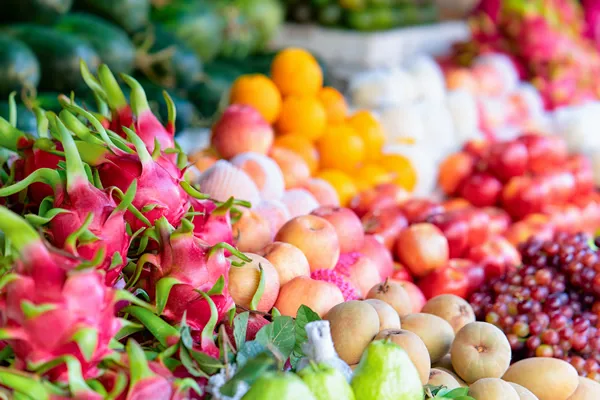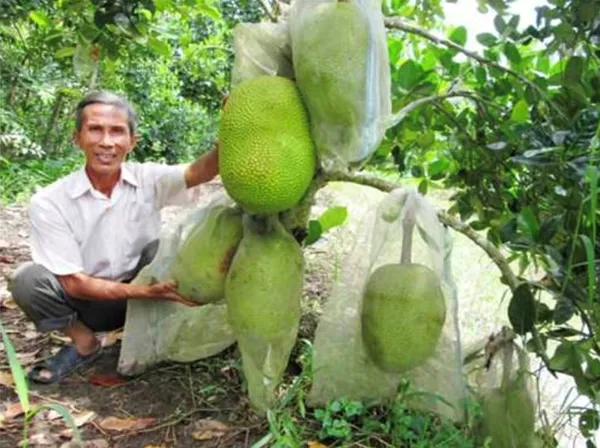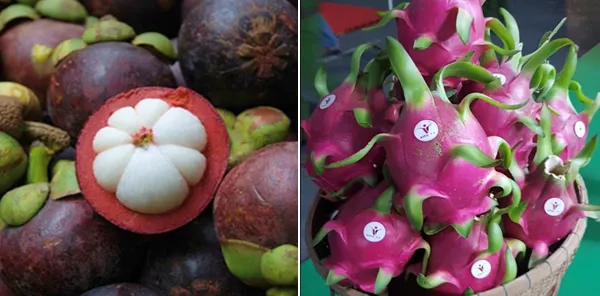The EVFTA (EU-Vietnam Free Trade Agreement) came into force on 1 August. The Vietnamese embassy is, therefore, arranging a webinar and matchmaking activities. It will be on Tuesday, 29 September. It will highlight Vietnamese fruit and vegetable export opportunities. The country wants to bring these to the attention of Dutch fruit and vegetable traders.
We asked Nguyen Hai Tinh a few questions. He's from the Vietnamese Embassy in the Netherlands' Trade Office. We asked about Vietnamese fruit and vegetables' potential on the Dutch market. "The 94% import tax on Vietnamese fruit and vegetables will immediately be cut to 0%. That's thanks to the EVFTA. That'll improve European fruit and vegetable trading companies' competitiveness if they import goods from Vietnam."

We asked what advantage there's to doing trade with Vietnam, rather than other Asian countries. Hai Tinh Nguyen says that not only are import taxes slashed to zero percent. The horticultural and fruit tree sectors are the most promising driving forces behind the Vietnamese economy. "According to experts, Vietnam could become one of the most important fruit exporters for the EU and the world. Vietnam has more than one million hectares of fruit trees. The country harvested a total of more than 11 million tons of fruit a year."
"Vietnamese farmers are continually adapting their cultivation to meet food safety, hygiene, and GlobalGAP standards. Exporters know how to improve storage technology. They use this to store fruit and vegetables that are to be exported to far-off markets. These include the EU and the US. Vietnamese fruit and vegetable have a typical, unique flavor compared to other countries in the region," explains Mr. Hai Tinh Nguyen.

According to him, these 13 Vietnamese fruit and vegetables are attractive export products.
- Dragonfruit (55.419 hectares), of which almost 50,000 hectares are being harvested. Total yield - 1,1 million tons. Exported fresh or dried slices or squares.
- Mango (area of about 100,000 hectares in South Vietnam). Production of nearly 900,000 tons. Thirteenth largest mango producer in the world. Exported fresh as well as canned.
- Longan (70,000 hectares, equally divided over South and North Vietnam). Production of 700,000 tons/year. Exported as both a fresh and dried product.
- Pomelo (44.000 hectares) Production of 370,000 tons, mainly in South Vietnam. The most popular variety is the Da Xanh. Export fresh, peeled and frozen.
- Rambutan (24,000 hectares) Production of 150,000 tons/year. Grown in South Vietnam. Export as a fresh, canned, and frozen product.
- Mangosteen (7,200 hectares/31,000 tons per year). Mostly cultivated in South Vietnam. Exported to the fresh market.
- Jackfruit (17,000 hectare/290,000 tons annually). Export both fresh and dried.
- Star Apple (4,700 hectare/48,000 tons per year). Grown in South Vietnam. Exported fresh (by air) and frozen (by sea).
- Lychee (60,000 hectares) Production is 350,000 tons/year in North Vietnam. Third largest global producer. Export fresh, canned, frozen, and dried.
- Passionfruit (10,000 hectare/500,000 ton per year). Export as a fresh and frozen product, as well as juice.
- Coconut (175,000 hectares). Seventh largest producer among 93 countries in the world. Exported as freshly-peeled, canned, grated, and as coconut water.
- Pineapple (40,000 hectares/500,000 tons annually). The tenth-largest producer in the world. Exported fresh, canned, frozen, and diced.
- Lemons (23,000 hectares) Production is 290,000 tons/year, mainly in South Vietnam. Mostly exported to the fresh market.
- Purple sweet potatoes: 300,000 tons per year.

Webinar
The webinar is made up of two parts. Firstly, there will be an information part. Fruit and vegetable importers will be told about Vietnamese fruit and vegetable opportunities. Vietnamese government officials, the Dutch embassy, the Dutch Business Association in Vietnam, and Vietnam Logistics Association will share this information.
The EVFTA benefits and the Vietnamese fruit and vegetable sector will be discussed. Practical tips about doing business in Vietnam will be shared. The bilateral strategic partnership in the areas of sustainable horticulture and food security will be explained, as will the transport route between Vietnamese and Dutch harbors and airports.
The webinar will introduce companies to the Vietnamese business environment and the Dutch Business Association in Vietnam's business experience. This association supports Dutch companies operating in Vietnam. There's also an opportunity to question these experts and officials.
The program's second part is a matchmaking session. Fruit and vegetable importers can meet reliable Vietnamese suppliers and processors. The Vietnam Trade Promotion Agency organized this. Dutch importers can separately meet at least three Vietnamese suppliers/exporters online. The agency will store the importers' names and contact information. If desired, they can promote these to Vietnamese businesses.
